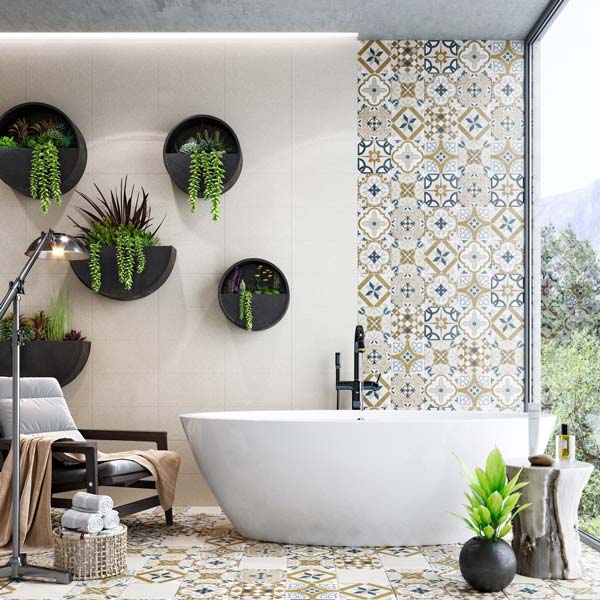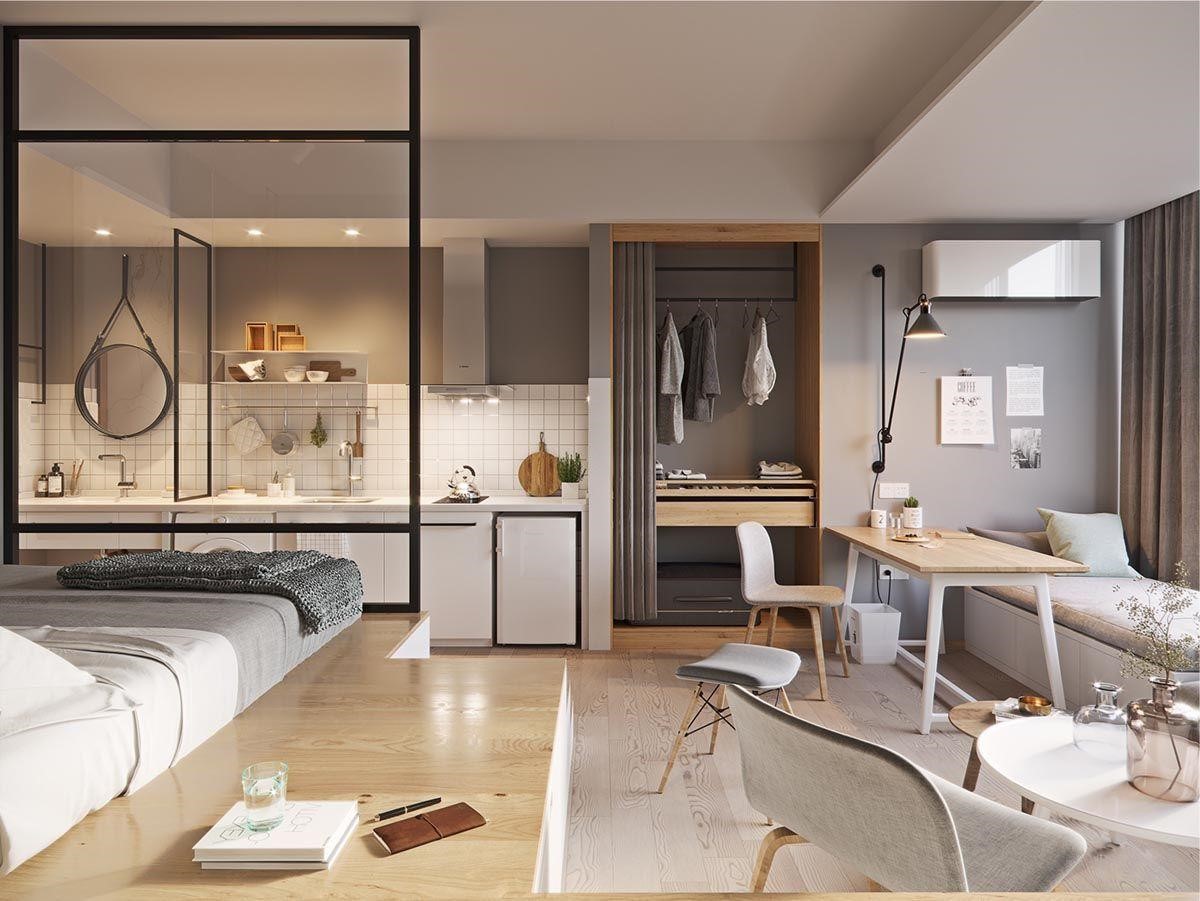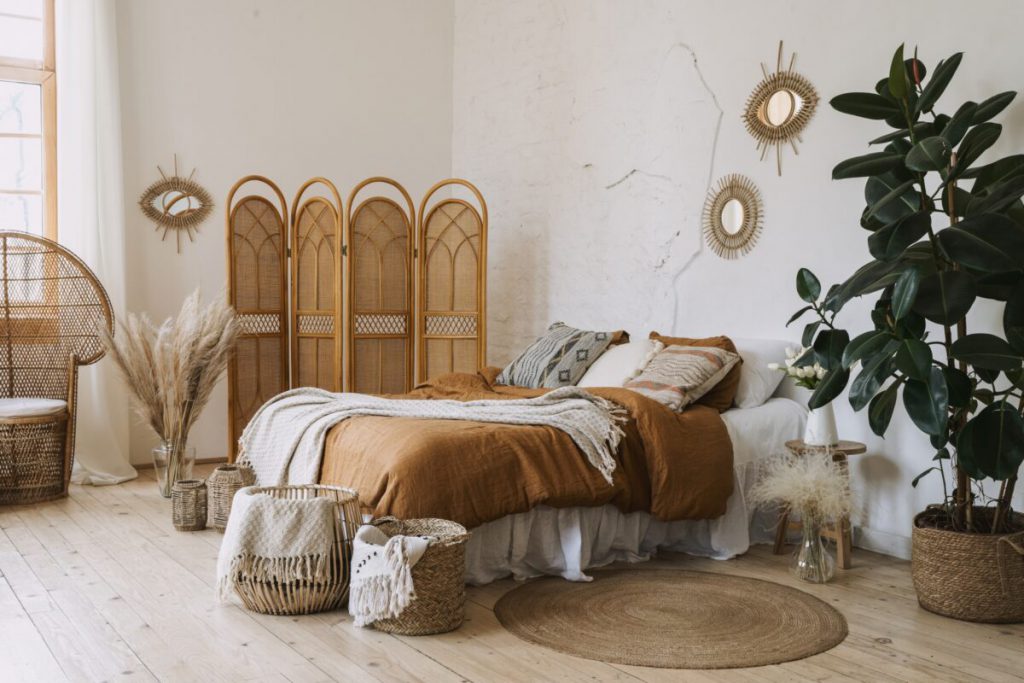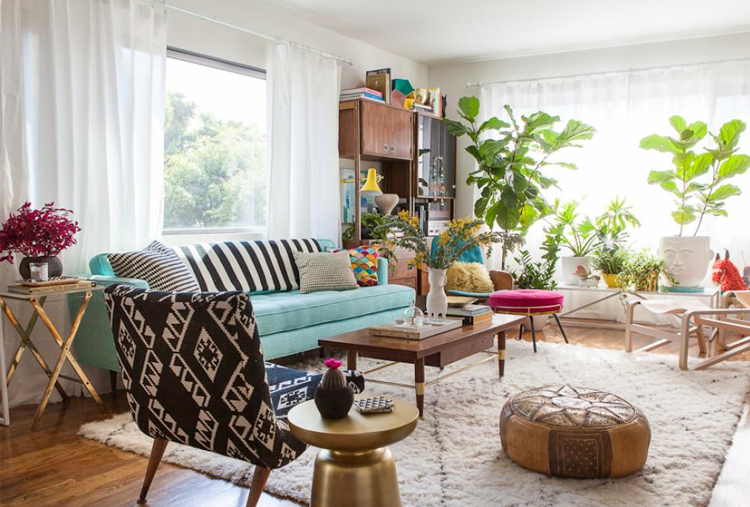There has been a significant reemergence of mid-century modern design. It has achieved such widespread popularity that many design aesthetics are embedded into infrastructure and interior layouts.
Its pervasiveness, however, also means that the term’s original meaning may have been lost in translation. What exactly does the word “mid-century modern” mean nowadays, anyway? Let’s find it out now together with Thetips!
Read more:
- Differences Between Mid Century Modern & Scandinavian Style
- 10 Best Home Decor Affordable Sites You Should Know About!
What is Mid-century Modern Style?
Mid-century modern design was the most popular style of furniture in the middle of the 20th century. Simple, functional wooden pieces made from teak and curved designs were the most popular. Midcentury modern design evolved in response to a post-World War II environment.
The origin of Mid-century modern design
Despite being labeled as a fad that indeed isn’t here to stay, mid-century modern has consistently shown up as one of the most beloved and secure styles in the United States. Mid-century modern’s trend is still expected to continue well into 2021.
Maybe it’s still popular because we all hold the 1970s, the era when it first emerged, in such high esteem. The current iteration of the look is like a time capsule preserved in the present day. It’s a breath of fresh air compared to more generalized forms of 21st-century modern and contemporary design; it’s instantly recognizable and focuses on the essentials.
Read more:
- Top 9 1950s Home Decor Ideas Style
- Top 10 best ideas: How to decorate your rental apartment like a truly home
The history of mid-century style
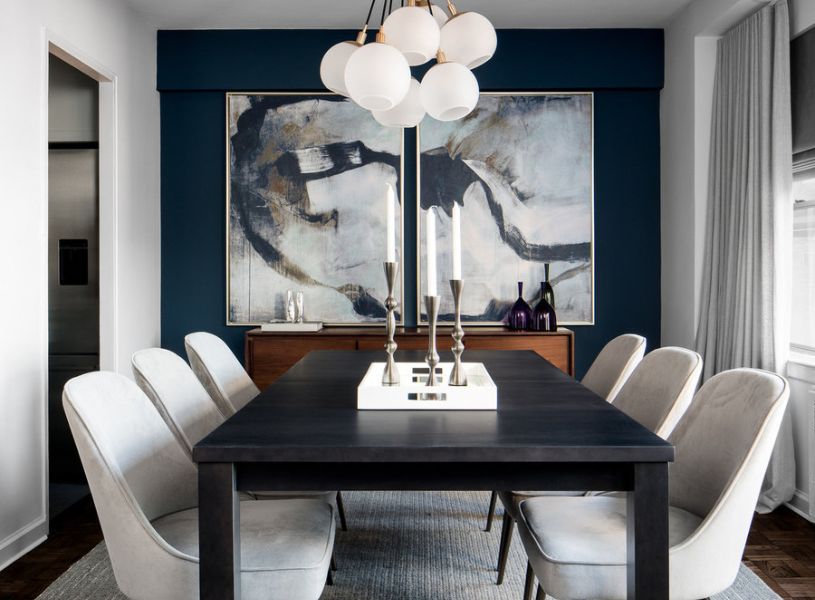
Mid-century modern refers to the decades following World War II, roughly the 1940s through the late 1960s of the 20th century. North America’s population and real estate market were exploding during this time.
After WWII, many German designers brought mid-century aesthetics when immigrated to the United States. From the middle to the end of the 1950s, retro-futurist style permeated the American design scene. As the 1980s progressed, most notably those of the Memphis design school became more prevalent, marking a time for the mid-century modern decorating to start spreading to the world.
Read more: 9 Ideas for 1950s Home Decor
Mid-century modern become popular
Suburbs sprang up after World War II due to the influx of young families buying their first homes and furnishing them with modern conveniences and decorative touches that reflected the optimism of the time.
Compared to houses built a century earlier, they desired ones with more modern features, such as more oversized windows, communal living areas, and energy-saving appliances. With expanding scientific knowledge, new building supplies, textures, effects, and silhouettes were made available for these dwellings. The resulting style, known today as Mid-century modern, is not to be missed.
Four characteristics of Mid-century modern
1. Furniture emphasizes function more than ornament

One of the hallmarks of mid-century Modern style is its functionality in furnishing. Though the aesthetic appeal of mid-century modern furniture can’t be denied, the primary focus of this design style is on practicality. Each component serves a function and contributes to the overall minimalist aesthetic. Because of this era’s emphasis on utility, many functional antiques from that time are still in use today.
Read more: TOP 6 Nordic style small bedroom furniture models
2. Clean lines and minimal fuss

The term “clean lines” refers to a lack of interruptions in a line’s continuity. Lines that are easy on the eyes are typically associated with more recent periods of architecture and design and more contemporary decor. Mid-century modern house’s clean curves are simple, unadorned, and uninterrupted.
Read more: Interior decoration in French style
3. Natural materials and forms

Wood, vinyl, glass, and metal are all appropriate for use in mid-century modern design. The idea of a mid-century age, style, and look should be brought out through the efficient use of these materials, focusing on traditional materials. Most non-traditional materials were not readily available in the mid-century, but including them in your design is essential for standing out from the crowd.
The organic and geometric shapes coexist in mid-century modern design. There is a growing preference for rounded and curvy forms in home decor. The fluid organic forms bring a sense of motion and equilibrium to our home decor.
Read more: Top 10 beautiful bedroom interior paint colors leading the trend
4. Bold accent color
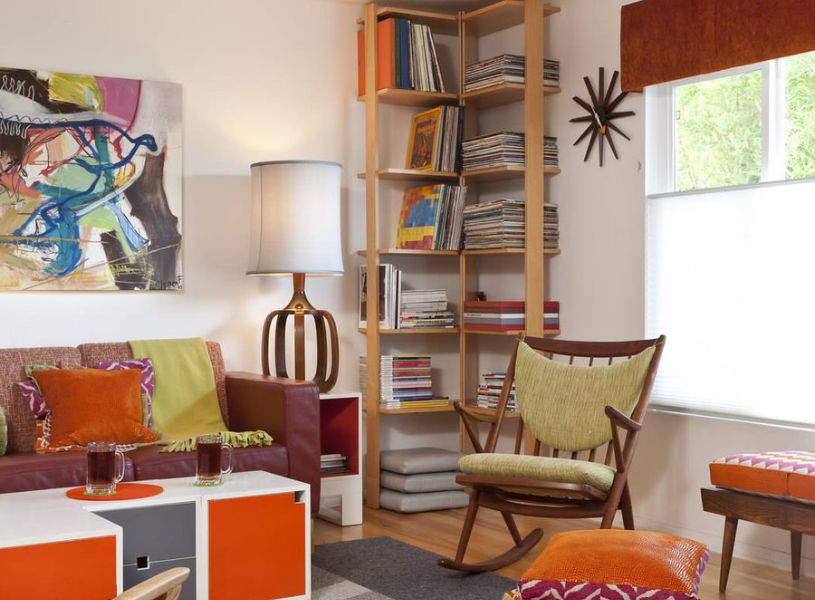
Color theory plays a significant role in MCM aesthetics. There was a lot of room for experimentation in the mid-century palette, which typically went from vivid colors in the 1950s to warmer earth tones in the 1960s. There should be a spotlight on pastels like sage green, robin’s egg blue, and butter yellow. Colors like orange, brown, ocher and green are often used as accents against a background of black, white, and wood tones.
Read more: What is Scandinavian style and why is Scandinavian style so popular?
What is the difference between mid-century and Mid-century modern?
Regarding furniture, there is a big difference between mid-century and Mid-century Modern. There is, in fact, a massive gap between the two. Modern design, pioneered by figures like Le Corbusier in the 1930s, is a forerunner to the mid-century Modern style that emerged in the wake of World War II in 1945. At the same time, this less-is-more principle inspired the aesthetic movement known as mid-century Modern.
How to decorate a house interior in mid-century modern?
Floor and walls of mid-century modern home
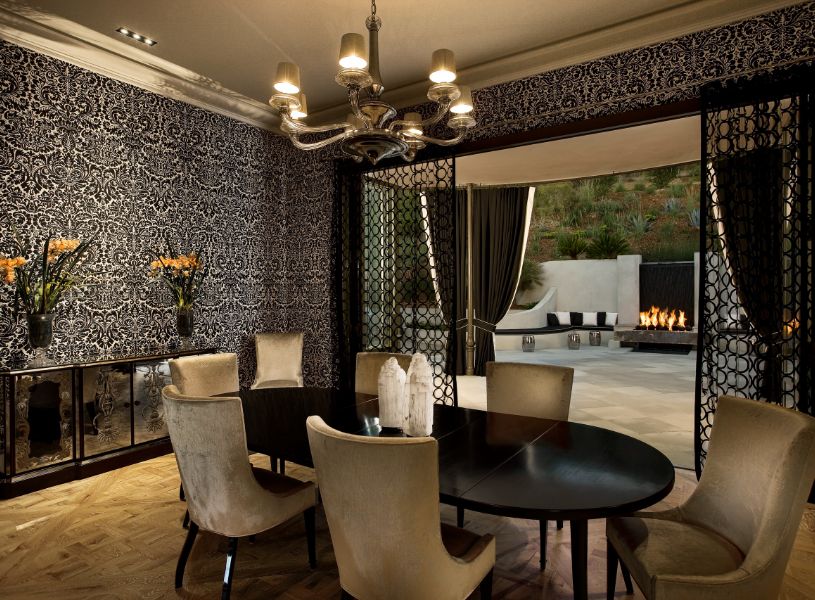
Homes built in the mid-20th century were known for their high-quality woodwork, especially their floors and walls. Golden oak was a popular wood choice due to its warmth and durability. Subtle grain wood flooring is a modern option for renovating a mid-century modern home. Remember that period appropriateness requires a clean and uncluttered appearance, so more dramatically marked hardwood varieties are inappropriate.
Mid-century modern furniture
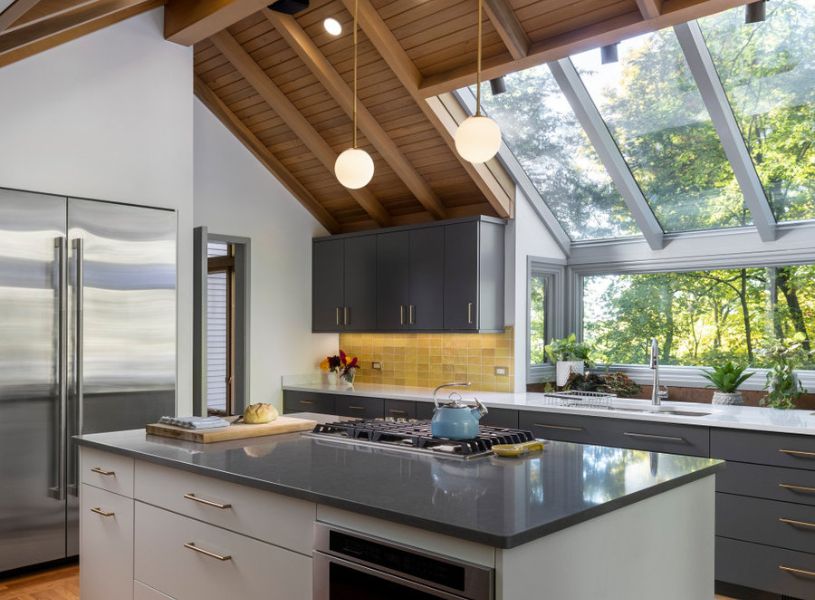
The hallmarks of mid-century modern interior design are its smooth curves, soft lines, and organic forms. Furniture in the mid-century Modern style, which dates back to the middle of the twentieth century (hence the name), is still fashionable today.
Texture
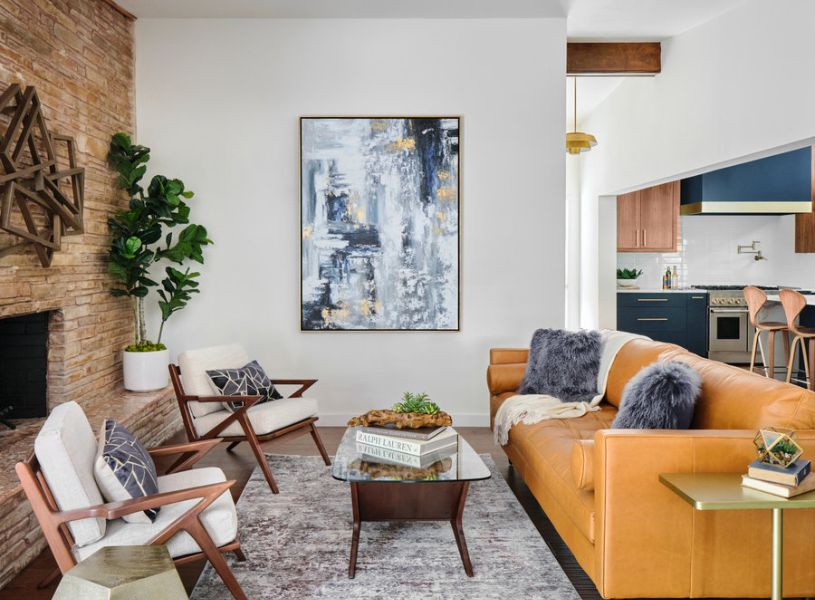
Tactile fabrics were prominent in mid-century design; velvet, crushed velvet, corduroy, leather, and even fur were all used regularly, sometimes all at once. The concept of combining textiles of different textures is preserved in mid-century design, albeit on a much pared-down scale.
Windows with natural light

Lights are a fundamental aspect of mid-century modern designs. However, even if your house doesn’t have many extravagant lamps and light devices, you can make the most of the sunlight that enters through those windows. Ditch heavy drapes and window coverings in favor of simpler, unfussy, sheerer versions that allow for better views of the outdoors.
10+ mid-century modern interior designs, you’ll love

Mid-century contemporary couches are characterized by their low profile. The utmost in relaxation can be achieved by combining a low coffee table with a stockpile of pillows.
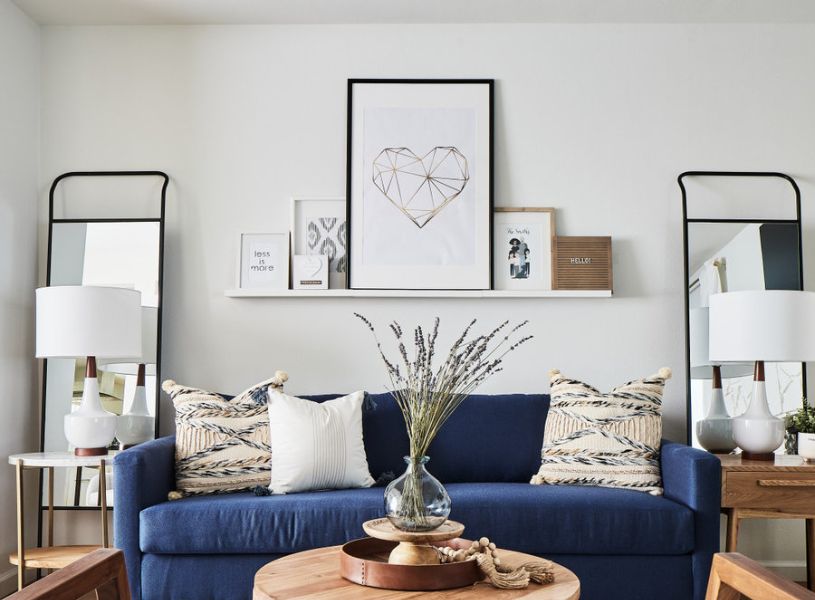
The combination of blue and white will soften the presence of each room. The beautiful woodwork on the coffee table goes excellent with the sharply tailored sofa; together, they avoid being too matchy.

Orange crush, beware of the pastel palette! Overstock nailed it with the layering of the peachy shade throughout this delightful home, from the baking oven to the kitchen hood.
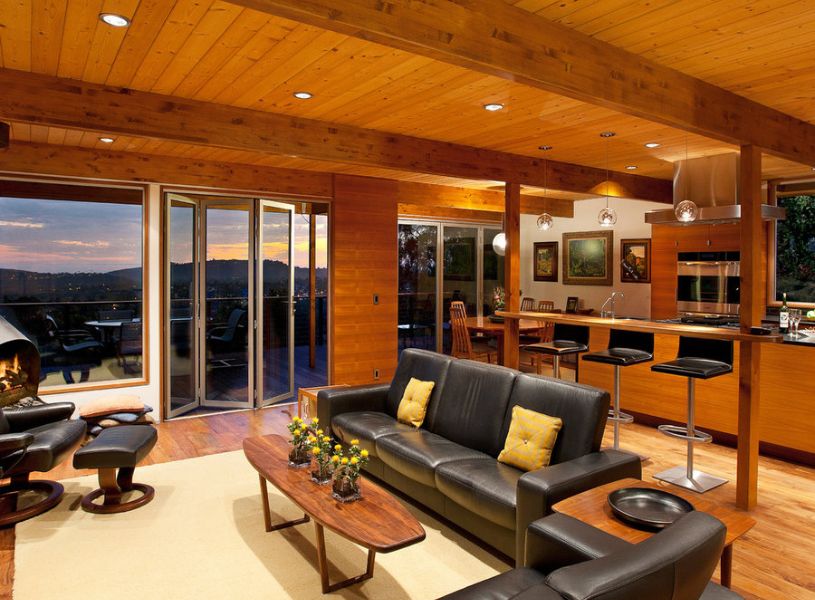
The MCM aesthetic tends to favor more private rooms. Discreet spaces with a natural stone fireplace, unadorned furnishings, and bare bookshelves will be a perfect combination. The vistas and sight lines outside are crucial. Doesn’t being in here tempt you to unplug for a while?
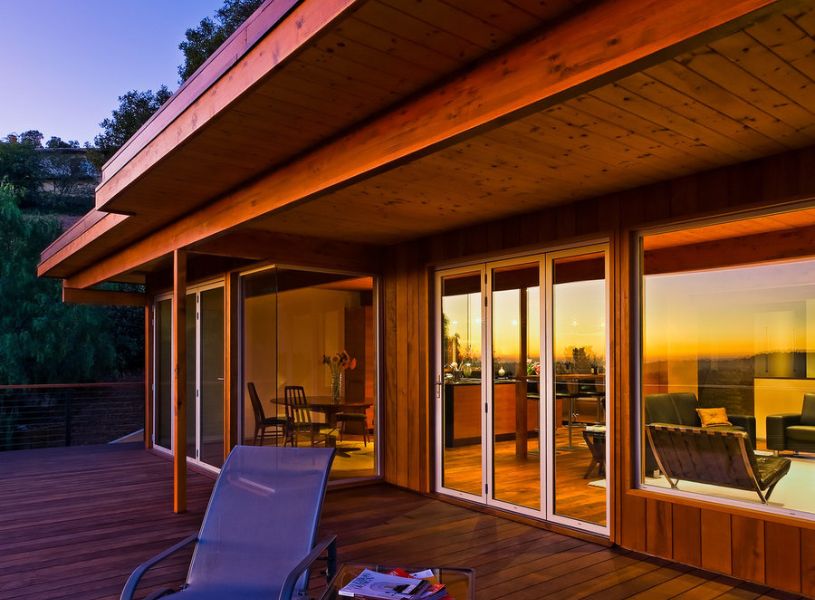
You’ll have to ship in a lot of walnut wood to finish your inside. Consider this fantastic piece of furniture, a sofa from Wayfair with a scooped seat and legs made of walnut. It would look great with a walnut table and credenza.

By keeping furniture at or near floor level, and the space feels more open and less congested. The article’s birch sectional could be the ticket if you’re looking to get this feeling. The couch is a contemporary update on a mid-century design, with its soft tufting, clean lines, and bolster cushions.
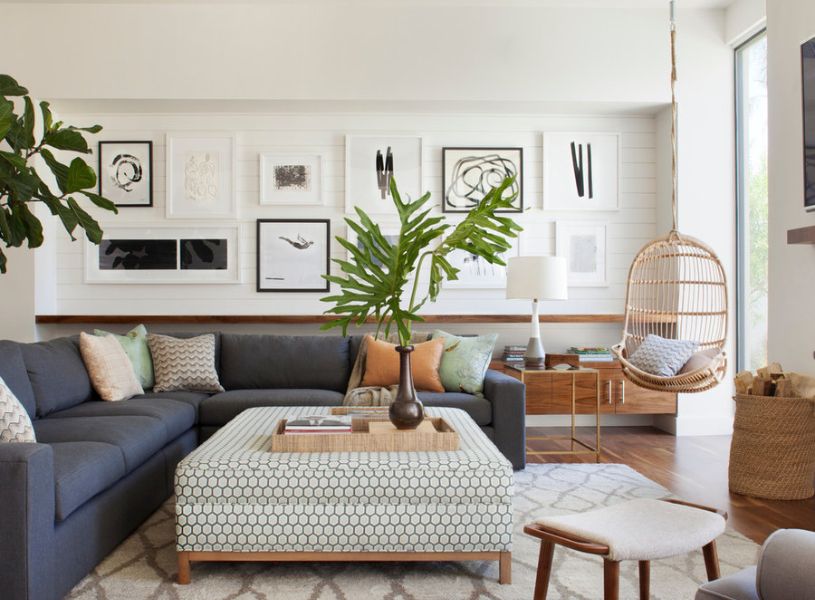
If you’re a fan of mid-century design and have some cash to spare, you’ll want nothing less than a collection of classic pieces in your living room. Everything from a square table and soft sofa to a walnut cabinet and an indoor swing can lighten up the room.

Unlike the famous Victorian style that came before it, MCM design is spare in its ornamentation. It avoids the cluttered surfaces and overstuffed rooms that are hallmarks of those styles. Instead of an abundance of trinkets, the focus shifted to furniture and architecture. Thus, please limit yourself to a minimum of charms and store them away in inconspicuous areas like bookcases.

The simplicity of mid-century modern design allows for the use of flat-front or slab cabinet doors in the kitchen. Open shelves in a striking color are another option, but they require you to keep everything on them neat. Fantastic, contemporary choices include solid wood or wood veneer doors with visible grain and cabinets finished in either stain or paint.
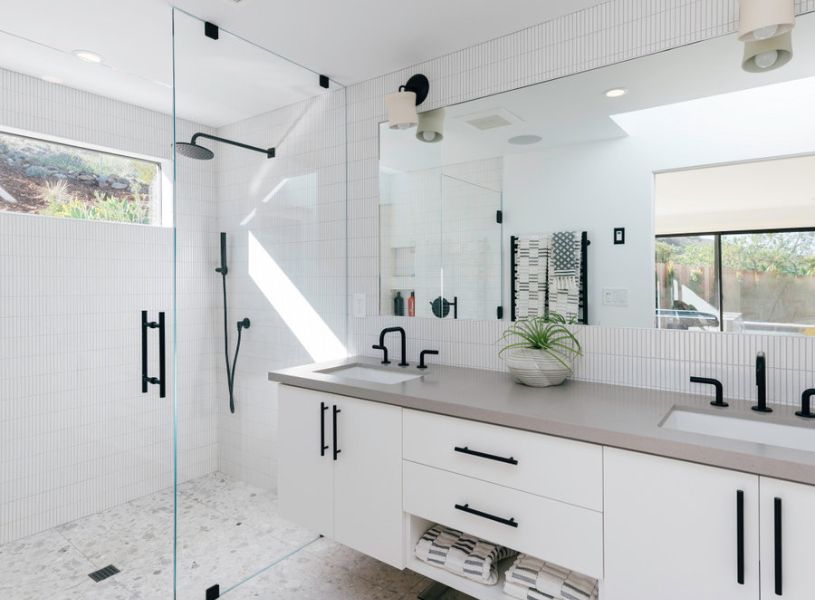
MCM style is adaptable to other aesthetics because of its practicality, clean lines, and lack of frills. In particular, Scandinavian and industrial styles go well together, but combining them with more traditional ones like farmhouses or rustic ones takes courage.
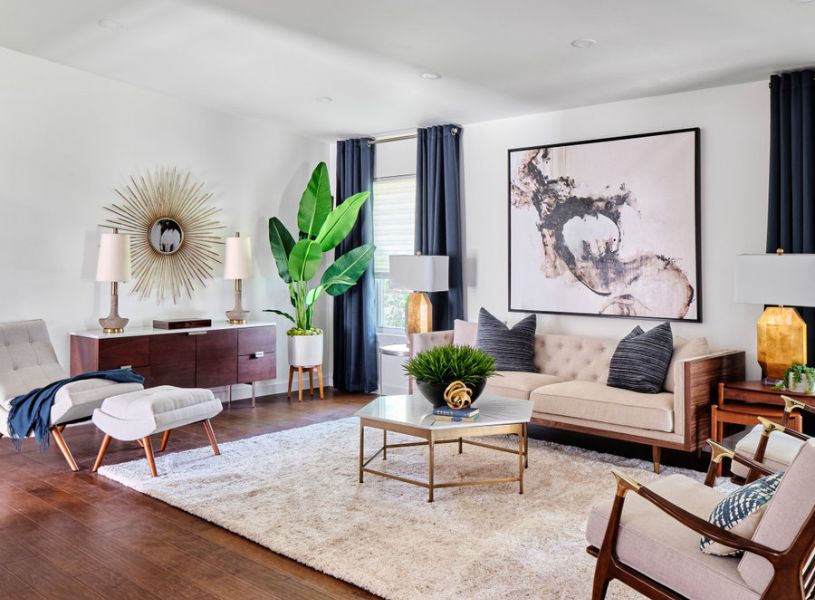
Invest in a MCM living room as part of a more extensive renovation of the entire house to see the difference. Everything about it looks like it was plucked from the Mad Men era, from the furnishings to the building to the design.
Last words
In conclusion, the historical significance of the mid-century modern trend is ensuring its longevity in this today’s age. The following are a few of the most salient points of the article:
- Though it has been around for over 50 years, the mid-century modern style remains popular because of its accessibility and adaptability.
- The mid-century modern aesthetic is characterized by a clear set of features that focus on only the essentials.
- However, it is still open for a creative mind to be used in various contexts and altered to suit individual tastes.

